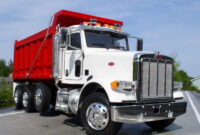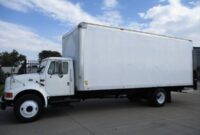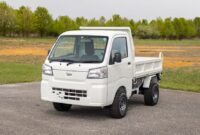How Much Does A 2013 Jeep Wrangler Weigh: A Comprehensive Guide pickup.truckstrend.com
The 2013 Jeep Wrangler, a quintessential symbol of off-road adventure and rugged capability, continues to be a highly sought-after vehicle. Whether you’re an avid off-roader, a daily commuter, or considering purchasing one, understanding its weight is far more crucial than you might initially think. The weight of your 2013 Jeep Wrangler directly impacts everything from its fuel efficiency and acceleration to its braking performance, handling, payload capacity, and even its towing capabilities. It’s a fundamental metric that influences safety, performance, and compliance with legal limits.
This comprehensive guide will delve into the various aspects of the 2013 Jeep Wrangler’s weight, breaking down curb weight, gross vehicle weight rating (GVWR), payload, and how different configurations and modifications can alter these figures. By the end, you’ll have a thorough understanding of what your Wrangler weighs and why it matters.
How Much Does A 2013 Jeep Wrangler Weigh: A Comprehensive Guide
Understanding the Basics: Curb Weight
When people ask "How much does a 2013 Jeep Wrangler weigh?", they are usually referring to its curb weight. Curb weight is the total weight of a vehicle with all standard equipment, including a full tank of fuel, all necessary fluids (oil, coolant, etc.), but without passengers, cargo, or any aftermarket accessories. It represents the vehicle in its ready-to-drive state, straight from the factory.
For the 2013 Jeep Wrangler, curb weight varies significantly based on the body style (two-door vs. four-door) and trim level (Sport, Sahara, Rubicon). The four-door models (known as the Wrangler Unlimited or JKU) are inherently heavier due to their extended wheelbase and additional structural components.
Here’s a general breakdown of the curb weights for the 2013 Jeep Wrangler:
- 2013 Jeep Wrangler (2-Door) Curb Weight: Approximately 3,760 to 3,950 lbs (1,705 to 1,790 kg).
- Sport (2-Door): Around 3,760 lbs (1,705 kg)
- Sahara (2-Door): Around 3,870 lbs (1,755 kg)
- Rubicon (2-Door): Around 3,950 lbs (1,790 kg)

- 2013 Jeep Wrangler Unlimited (4-Door) Curb Weight: Approximately 4,075 to 4,350 lbs (1,848 to 1,973 kg).
- Sport Unlimited (4-Door): Around 4,075 lbs (1,848 kg)
- Sahara Unlimited (4-Door): Around 4,200 lbs (1,905 kg)
- Rubicon Unlimited (4-Door): Around 4,350 lbs (1,973 kg)


These figures are for stock vehicles. Any factory-installed options or aftermarket additions will alter these numbers.
Gross Vehicle Weight Rating (GVWR)
While curb weight tells you what the empty vehicle weighs, the Gross Vehicle Weight Rating (GVWR) is arguably a more critical figure for practical use. The GVWR is the maximum permissible total weight of a fully loaded vehicle, including the vehicle itself (curb weight), all passengers, cargo, and any accessories. It is a safety limit set by the manufacturer that you should never exceed. Overloading your vehicle beyond its GVWR can compromise handling, braking, and structural integrity, leading to dangerous situations and potential mechanical failures.
For the 2013 Jeep Wrangler models:
- 2013 Jeep Wrangler (2-Door) GVWR: Approximately 4,900 lbs (2,223 kg)
- 2013 Jeep Wrangler Unlimited (4-Door) GVWR: Approximately 5,500 lbs (2,495 kg)
You can usually find your specific vehicle’s GVWR on a sticker located on the driver’s side door jamb or in the owner’s manual.
Payload Capacity: How Much Can You Carry?
Payload capacity is the maximum amount of weight (passengers + cargo) that your vehicle can safely carry. It is directly derived from the GVWR and curb weight using a simple formula:
Payload Capacity = GVWR – Curb Weight
Knowing your payload capacity is essential for anyone who plans to haul gear for camping, off-roading, or simply transport multiple passengers.
Based on the average curb weights and GVWRs:
- 2013 Jeep Wrangler (2-Door) Payload Capacity: Roughly 950 to 1,140 lbs (430 to 517 kg)
- 2013 Jeep Wrangler Unlimited (4-Door) Payload Capacity: Roughly 1,150 to 1,425 lbs (521 to 646 kg)
Always consider the weight of all occupants and anything you load into or onto your Wrangler, including roof racks, camping gear, recovery equipment, and even modifications like heavy bumpers or winches.
Towing Capacity: Pulling Power
The weight of your Wrangler also plays a significant role in its towing capacity. The 2013 Jeep Wrangler’s towing capacity is respectable for its class, but it differs between the two-door and four-door models due to the four-door’s longer wheelbase and higher GVWR, which provide greater stability and a higher towing limit.
- 2013 Jeep Wrangler (2-Door) Towing Capacity: 2,000 lbs (907 kg)
- 2013 Jeep Wrangler Unlimited (4-Door) Towing Capacity: 3,500 lbs (1,588 kg)
It’s crucial to also be aware of the Gross Combined Weight Rating (GCWR), which is the maximum allowable weight of the fully loaded vehicle (GVWR) plus the fully loaded trailer. Exceeding any of these weight limits can lead to dangerous handling, excessive wear on components, and potential legal issues.
Factors Influencing a 2013 Jeep Wrangler’s Weight
While the factory specifications provide a baseline, several factors can significantly alter the actual weight of a 2013 Jeep Wrangler:
- Body Style and Trim Level: As discussed, 4-door models are heavier than 2-door models. Within each body style, higher trim levels like the Rubicon often include heavier-duty components (e.g., stronger axles, larger tires, rock rails) that add weight compared to a base Sport model.
- Transmission Type: While not a massive difference, automatic transmissions typically weigh slightly more than manual transmissions.
- Hard Top vs. Soft Top: A factory hardtop adds a noticeable amount of weight compared to a soft top, often 50-100 lbs (23-45 kg) or more.
- Optional Equipment and Packages: Features like the Connectivity Group, Trailer Tow Group, premium sound systems, and specific wheel/tire packages can cumulatively add weight.
- Aftermarket Modifications: This is where the weight can truly spiral upwards. Many popular Wrangler modifications add substantial weight:
- Heavy-Duty Bumpers: Steel bumpers, especially with tire carriers and winch mounts, can add 100-200 lbs (45-90 kg) or more, front and rear.
- Winch: A powerful winch can easily add 60-100 lbs (27-45 kg).
- Skid Plates and Armor: Protecting the undercarriage with steel or aluminum plates adds weight.
- Lift Kits: While some components might be lighter, heavy-duty springs and shocks designed for increased load can also contribute.
- Larger Tires and Wheels: Heavier, more aggressive tires and beadlock wheels can add significant unsprung weight.
- Roof Racks and Roof-Mounted Tents: These can add hundreds of pounds, especially when loaded with gear.
- Drawer Systems and Interior Storage: Custom interior setups for overlanding or gear storage can add substantial weight.
- Auxiliary Fuel/Water Tanks: Carrying extra fluids adds weight at 8.34 lbs/gallon for water and around 6 lbs/gallon for gasoline.
It’s not uncommon for a heavily modified 4-door Wrangler Unlimited to weigh well over 5,000 lbs (2,268 kg) curb weight, nearing or even exceeding its original GVWR before passengers or cargo are added.
Why Understanding Your Wrangler’s Weight Matters
Knowing the weight of your 2013 Jeep Wrangler is critical for several reasons:
- Performance: Increased weight negatively impacts acceleration and can make the engine feel sluggish.
- Fuel Economy: A heavier vehicle requires more energy to move, directly leading to lower miles per gallon (MPG).
- Braking Performance: Heavier vehicles take longer to stop and put more strain on the braking system, increasing stopping distances and brake wear.
- Handling and Stability: Excessive weight, especially if poorly distributed or with a high center of gravity (e.g., roof rack), can compromise handling, increase body roll, and reduce stability, especially off-road or in emergency maneuvers.
- Safety: Overloading your Wrangler can lead to tire blowouts, suspension failure, and diminished control, posing a significant safety risk.
- Legal Compliance: Operating an overloaded vehicle can result in fines and liability in the event of an accident.
- Component Longevity: Constantly running at or above weight limits accelerates wear on tires, brakes, suspension components, axles, and the drivetrain.
Practical Advice and Actionable Insights
- Check Your Door Jamb Sticker: For the most accurate factory specifications for your specific vehicle, always refer to the sticker on the driver’s side door jamb. It lists the GVWR and often the GAWR (Gross Axle Weight Rating).
- Weigh Your Modified Vehicle: If your Wrangler has significant aftermarket modifications, the only way to truly know its current curb weight is to weigh it. Truck stops with certified scales (CAT scales) or recycling centers often have public scales. Weigh it empty (just you) and then with your typical load of gear and passengers.
- Consider Weight in Modifications: Before adding heavy accessories, consider the impact on your vehicle’s overall weight, performance, and payload capacity. You might need to upgrade suspension components, brakes, or even tires to compensate for the added mass.
- Distribute Weight Properly: When loading your Wrangler, try to keep the heaviest items low and centered within the vehicle to maintain a stable center of gravity. Avoid putting excessive weight on the roof.
- Adjust Tire Pressure: When carrying a heavy load or towing, it’s often advisable to increase your tire pressure to the maximum recommended on the tire sidewall for load, or follow your owner’s manual’s recommendations for loaded vehicles.
- Regular Maintenance: A heavier vehicle puts more strain on all its components. Ensure regular maintenance, especially for brakes, suspension, and tires, if you frequently run with a heavy load or are heavily modified.
2013 Jeep Wrangler Weight Specifications Summary Table
This table provides a concise overview of the key weight specifications for the 2013 Jeep Wrangler.
| Specification | 2013 Jeep Wrangler (2-Door) | 2013 Jeep Wrangler Unlimited (4-Door) | Notes |
|---|---|---|---|
| Curb Weight (Approx.) | 3,760 – 3,950 lbs (1,705 – 1,790 kg) | 4,075 – 4,350 lbs (1,848 – 1,973 kg) | Varies by trim (Sport, Sahara, Rubicon) and options. Empty vehicle weight. |
| Gross Vehicle Weight Rating (GVWR) | 4,900 lbs (2,223 kg) | 5,500 lbs (2,495 kg) | Max permissible weight of vehicle + passengers + cargo. Do not exceed. |
| Payload Capacity (Approx.) | 950 – 1,140 lbs (430 – 517 kg) | 1,150 – 1,425 lbs (521 – 646 kg) | Calculated as GVWR – Curb Weight. Max weight of passengers and cargo. |
| Towing Capacity | 2,000 lbs (907 kg) | 3,500 lbs (1,588 kg) | Max weight of a trailer the vehicle can safely pull. |
| Gross Axle Weight Rating (GAWR) | Varies by axle (Front/Rear) – Check door jamb | Varies by axle (Front/Rear) – Check door jamb | Max weight on each individual axle. |
| Gross Combined Weight Rating (GCWR) | ~6,900 lbs (3,130 kg) | ~8,500 lbs (3,856 kg) | Max combined weight of vehicle, passengers, cargo, and loaded trailer. |
Note: All weights are approximate and can vary based on specific factory options, trim levels, and individual vehicle configurations. Always refer to your specific vehicle’s door jamb sticker and owner’s manual for precise figures.
Frequently Asked Questions (FAQ)
Q1: Why is the 4-door Wrangler Unlimited heavier than the 2-door?
A1: The 4-door Wrangler Unlimited (JKU) has a significantly longer wheelbase, an extended frame, and additional body panels and interior components, all of which contribute to its higher curb weight compared to the 2-door (JK) model.
Q2: Will adding a lift kit make my 2013 Wrangler heavier?
A2: It depends on the components. While the lift itself doesn’t always add significant weight, many lift kits are installed alongside heavier components like aftermarket bumpers, winches, and larger, heavier tires, which collectively add substantial weight. Heavy-duty springs designed for increased load capacity also contribute.
Q3: How can I find the exact weight specifications for my specific 2013 Wrangler?
A3: The most accurate way is to check the sticker on the driver’s side door jamb. This sticker provides the specific GVWR and GAWR for your vehicle as it left the factory. For actual curb weight with modifications, you’ll need to weigh your vehicle at a public scale.
Q4: Does removing the doors or roof affect the weight much?
A4: Yes, removing the doors and the soft or hard top can reduce the curb weight. A hard top can weigh 100-150 lbs, and each door can weigh 50-70 lbs. While not a massive change, it can make a noticeable difference, especially on the 2-door model.
Q5: What happens if I exceed my Wrangler’s GVWR or towing capacity?
A5: Exceeding these limits can lead to dangerous handling, longer braking distances, increased wear and tear on engine, transmission, brakes, and suspension components, potential tire failure, and could void your warranty or lead to legal issues and fines in some jurisdictions. It significantly compromises safety.
Q6: Does the type of engine affect the weight of a 2013 Wrangler?
A6: The 2013 Jeep Wrangler exclusively came with the 3.6L Pentastar V6 engine, so there are no engine-specific weight variations for that model year. Earlier or later model years might have different engine options impacting weight.
Conclusion
Understanding "How Much Does A 2013 Jeep Wrangler Weigh" is fundamental for any owner or prospective buyer. From the baseline curb weight to the critical GVWR, payload, and towing capacities, these figures dictate how your vehicle performs, how much it can safely carry, and what it can tow. The robust nature of the Wrangler makes it highly amenable to modifications, but each addition carries a weight penalty that can impact performance, fuel economy, and safety.
By being mindful of your Wrangler’s true weight, regularly checking its specifications, and weighing it if heavily modified, you ensure a safer, more efficient, and more enjoyable ownership experience. Whether you’re conquering trails or navigating city streets, respecting your Jeep’s weight limits is key to its longevity and your peace of mind.



